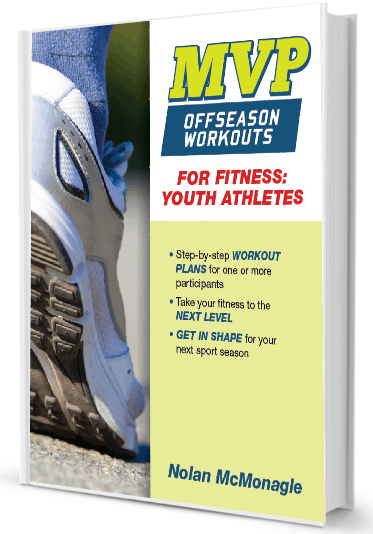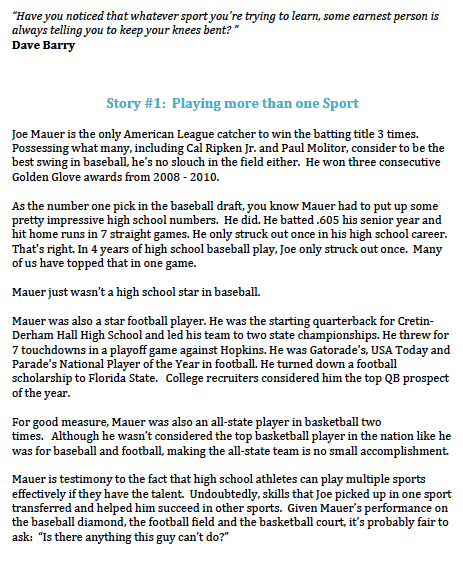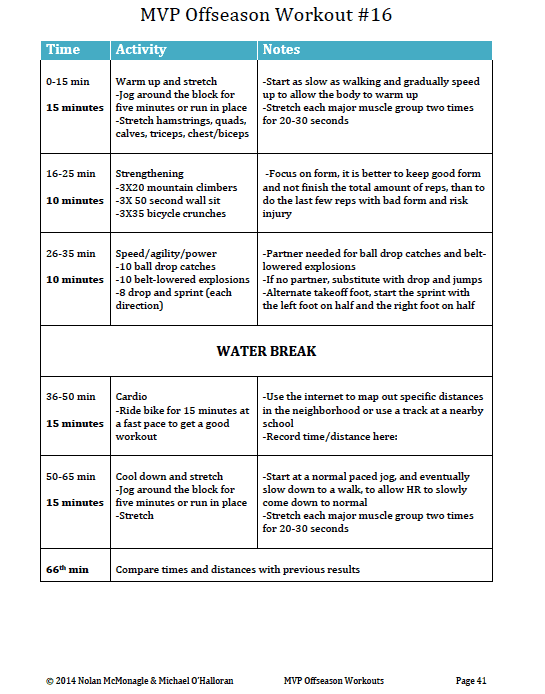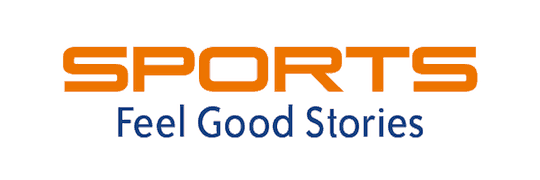Here’s a fitness training program for young athletes to take their fitness to the next level. Get ready for the sports season ahead and get in the best shape of your life with these Offseason Workouts Fitness.
This training plan will help young athletes develop speed, agility, strength, acceleration, and first-step quickness. These skills are essential in just about every sport.
Fitness Training Program
Get in shape for the season ahead.
18 carefully designed fitness workouts
A step-by-step breakdown of activities for this fitness training program.
Activities rotate from one to the next quickly to keep players interested and for the aerobic benefit.
Designed for either six weeks with three sessions each week or nine weeks with two sessions each week. During the sessions, kids participating in a sport frequently find the 9-week time period works best. A fitness training program that gets you in shape.
Ebook format. Print off the sheets you need and follow along for each workout or follow along on your smartphone.
Each workout includes an inspirational story and quote.
Before each workout, we recommend players read the stories and quotes.
Life lessons like overcoming obstacles, treating people with respect, and the power of having a positive attitude are reinforced.
Information young athletes should know.
Featured content includes:
How to interact with coaches
How to eat smart on game days and before and after practice
The benefits of goal setting and more

What type of players are these workout plans designed for?
Ages 10 – 17 years old – both boys and girls.
If the 66 minutes time period is too long or the activities are too challenging for younger players, we suggest shortening the sessions to 30 or 45 minutes in length. Pick and choose from the middle activities while maintaining the warm-up and ending activities to reduce the time.
Training Plans for Youth Athletes: Design Considerations
Some of the thinking that went into the overall workout plan and each individual plan include:
Aerobic fitness. Aerobic fitness, or cardio, is often the essential fitness that must be achieved to improve conditioning abilities. Exercise greater than two minutes is considered to be aerobic in nature and, therefore, includes almost all sporting activities.
Strengthening. You can take your game to the next level by performing basic, total body strengthening workouts. Being stronger does not simply mean pushing people around; it also leads to increased speed and overall athleticism.
Core strength and stability. Having six-pack abs does not mean you have a strong core. The core muscles include all muscles that stabilize the spine from the hip to the shoulder level. Exercises to improve core strength are crucial for athletes because the core is where power comes from.
Footwork. To improve speed and agility, you must be efficient in your footwork. If you are wasting steps when changing direction or accelerating, you lose speed and agility.
Get Fit
Plyometrics. Plyometrics is an exercise that gives the muscles involved a specific action in improving that muscle’s ability to switch from an eccentric contraction to a concentric contraction. It teaches your muscles to activate more quickly, increasing speed and power.
Shift activities quickly. Moving from one activity to the next fast keeps players interested and enables them to work on many different skill sets.
Increase difficulty over time. Some of the fitness drills will get progressively more difficult. Initially, we want athletes to grow accustomed to using different muscles, and then as the plan progresses, we’ll ask for more repetitions or more extended periods.
Feedback from results. Progression can be observed by logging sets, reps, time, distance, and other results tracking statistics. Use these results to compare to earlier workouts and see your progression. Review previous results to try and beat last times, distances, etc.
Mix it up
Change exercises from day to day. Rotating through different exercises between days keeps the routine fresh and keeps it from getting boring. It also helps avoid a “plateau” effect, where you stop improving because you are doing the same exercise day in and day out.
Designed for an individual but can be used with a bigger group. One player on their own can complete the activities for these off-season workouts. However, workouts can be more fun with a workout partner or two. These plans will accommodate that. A whole team could workout together if there are a big enough area and enough equipment.
Plans were designed for healthy kids who have played sports before. If you have any concerns about having your child participate in this program from a health perspective, consult with your physician. Kids should bring a water bottle with them and drink water as needed.
Why are offseason workouts important?
Start the season in great shape. By starting the season in shape, you put yourself in a great position to focus on the sport rather than catching your breath all of the time.
Improve speed, power, and agility. During the offseason is when an athletic ability is improved. Work on improving these components, and then use the regular season to apply them to sport-specific activities. For example, basketball players should enhance their first-step explosion in the offseason and then use it during the regular season to focus on exploding off the dribble.
Your team’s coaches don’t have enough time to improve all components of fitness. Usually, practices involve some conditioning, and players are encouraged or required to do weight training at higher levels. But, coaches do not have enough time to improve each player’s speed, power, agility, and overall strength. Use the offseason to help the coach and yourself come to practice with improved abilities.
Be ready for the season.
Repetition. In the offseason, you have all the time you want to improve. This means that if you notice something is going wrong, you can work on it. You can slow it down to ensure you are doing it properly and then take as many repetitions as possible to perfect it.
This is especially important for the footwork during activities; if your footwork is off, slow it down, perfect it, and then work up to full speed. You cannot be expected to do everything perfectly on the first try, but you will become better with more repetitions.
Decrease the risk of injury. The better shape you are in, and the safer, strain your muscles, tendons, and ligaments have had on them, the better the body is prepared to keep from injury.
It provides a platform to strengthen weaknesses and build on strengths. Individual workouts can be tailored to work on the areas specific to a player’s strengths and weaknesses.
It’s a relaxed environment where no one is watching. Individual workouts enable players to take risks with no fear of evaluation or criticism. Sometimes, by taking chances and some risks, players improve their abilities.
About the Author
Nolan McMonagle With a bachelor’s degree in Exercise Science from Central Washington University, Nolan has worked alongside a Physical Therapist with a professional indoor football team. In addition to helping treat players’ injuries, he put them through exercise programs to enhance their performance on the field. A basketball coach and author, he also co-wrote MVP Offseason Workouts for Youth Basketball.
Digital Download Available Immediately
Upon purchase, you’ll receive a PDF – this product is a digital download. The PDF works on both Macs and PCs – make sure you have the latest version of Adobe Reader (available for free) on your computer. The PDF enables you to print out pages you want when you need them.
SAMPLE PLAN from this fitness training program includes an inspirational story and agenda with an explanation for activities. Note: the size is 8.5″ x 11″ for convenient printing.


Appendix items for this fitness training program provide additional detail for the workouts.

MVP Offseason Workouts for Fitness — $21.95
[wp_eStore:product_id:17:end]
